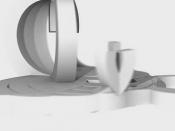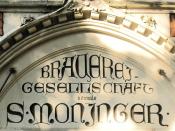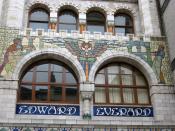Art Nouveau an international style of decoration and architecture which developed in the 1880s and 1890s. The name comes from the Maison de l'Art Nouveau, an interior design gallery opened in 1896 in Paris. Actually the movement had different names throughout Europe. In Germany they called it 'Jugendstil', from the magazine Diejugend published from 1896; in Italy 'Stile Liberty' or 'Floreale'; in Spain 'Modernista', in Austria 'Sezessionstil' and, interestingly enough, in France the English term 'Modern Style' was often used, highlighting the English origins of the movement.
"In design Art Nouveau was characterized by writhing plant forms and an opposition to the historicism which had plagued the 19th century. There was a tension implicit throughout the movement between the decorative and the modern which can be seen in the work of individual designers as well as in the chronology of the whole. Its emphasis on decoration and artistic unity links the movement to contemporary Symbolist ideas in art, as seen in the work of the Vienna Secessionists, but the movement was also associated with Arts and Crafts ideas and, as such, Art Nouveau forms a bridge between Morris and Gropius (recognized by Pevsner in his book, Pioneers of the Modern Movement, 1936).
"In Britain the style was exemplified by the architecture of Rennie Mackintosh, and the design work of the Macdonald sisters. The lingering impact of Morris in England slowed down the progress of the new style in design although Mackmurdo, Godwin, Townsend and even Voysey were influenced towards Art Nouveau. It was in illustration that the ideas were most keenly felt, through the new periodicals and presses - the Yellow Book, the Studio, the Savoy, the Hobby Horse - and though the work of Beardsley, Ricketts and Selwyn Image.
"In France, despite Guimard's...


